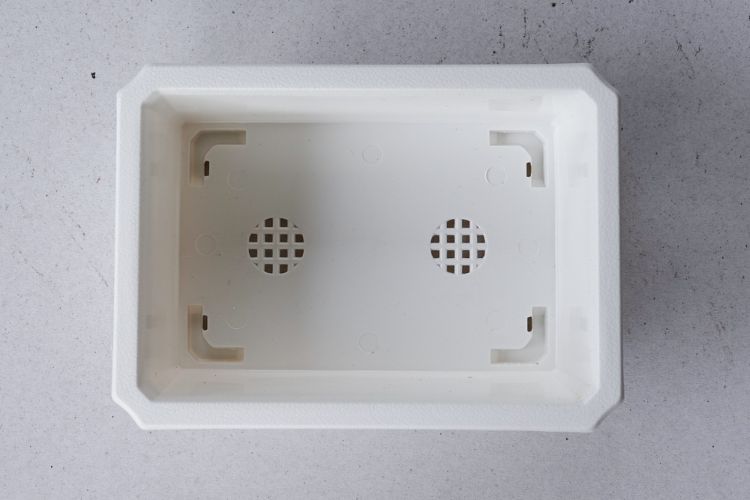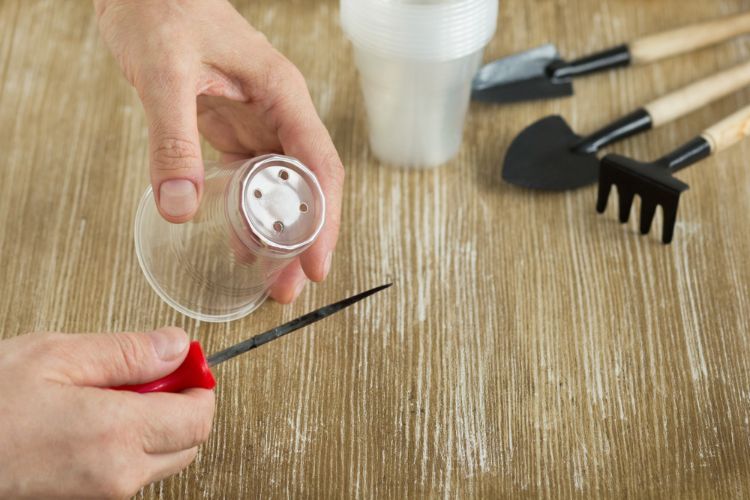Root rot is a common, and dangerous problem in the garden caused when healthy roots die due to lack of oxygen in the soil or the overgrowth of soil fungus. Waterlogged or oxygen-deprived soils encourage the growth and multiplication of fungi such as Pythium, Rhizoctonia, or Fusarium which spreads to infect the roots of plants.
Healthy roots then turn brown and mushy, unable to take in the nutrients needed for plant growth. As root rot progresses leaves turn yellow, wilt, or droop and become mushy as well until the plant perishes.
Advertisement
The challenge with root rot is that it often goes unnoticed since it occurs out of sight beneath the soil surface. Once symptoms are visible in the foliage the problem may be past the point of treating, endangering the entire plant. When conditions are perfect root rot can kill the whole plant within ten days.
The good news for gardeners is root rot is preventable with these seven following tips.
1. Do not overwater.

Shutterstock
The most successful way to prevent root rot in your garden plants is to simply not give them too much water. Adjust the timing on your irrigation system, or wait to manually water until the top one to two inches of soil is completely dried out.
2. Use containers with ample drainage holes.

Shutterstock
When container gardening, choose pots (or other containers) that have adequate drainage holes in the bottom to allow excess water to run out. If your containers don't have any you can easily drill holes yourself.

Shutterstock
3. Add organic material to your soil.

Shutterstock
Healthy, loose soil has good soil structure and pore space. Pore space is the empty space between soil particles that fills with air and water. Incorporating organic material such as finished compost into the upper few inches of soil increases both the pore space (allowing more room for oxygen) and the drainage rate to help prevent root rot.
4. Increase the drainage in your soil.

Shutterstock
Sometimes soil doesn't drain very well, whether it be your typical garden soil that may contain high amounts of clay or potting soil that has been used for repeated seasons. Amend the soil by adding horticultural grade perlite and incorporating it into the top four to six inches. Made from volcanic obsidian, this lightweight material is full of tiny air pockets that increase drainage to provide more oxygen to your plants' roots.
5. Make sure your plants get plenty of sunlight.

Shutterstock
Garden plants require sunlight for photosynthesis, a process within the plant that creates glucose for food. The amount they need depends upon how quickly they grow and varies from a minimum of four hours of direct sunlight daily to at least six or eight hours of sun every day. Insufficient lighting lets the soil stay too moist, encouraging root rot.
6. Allow air movement between plants.
Planting your garden plants too close to one another creates problems by not allowing sufficient air movement between the plants. In turn, the soil is often shaded which doesn't allow it to dry out quickly. Cramped quarters and lack of airflow also increases the incidence of fungal problems because of high humidity levels. Plant at the recommended spacing for the given plants and keep foliage trimmed to allow good air circulation.
7. Do not overfertilize.

Shutterstock
Advertisement
Another common mistake people make when gardening - especially when plants begin to look unhealthy - is overfertilizing. Over-fertilization leads to the buildup of soluble salts within the garden or potting soil. This salt buildup impedes water movement from the soil into the roots, creating waterlogged conditions and increasing the chance for root rot to occur. Follow the recommended fertilizer rates on the product label to avoid overfertilizing.

